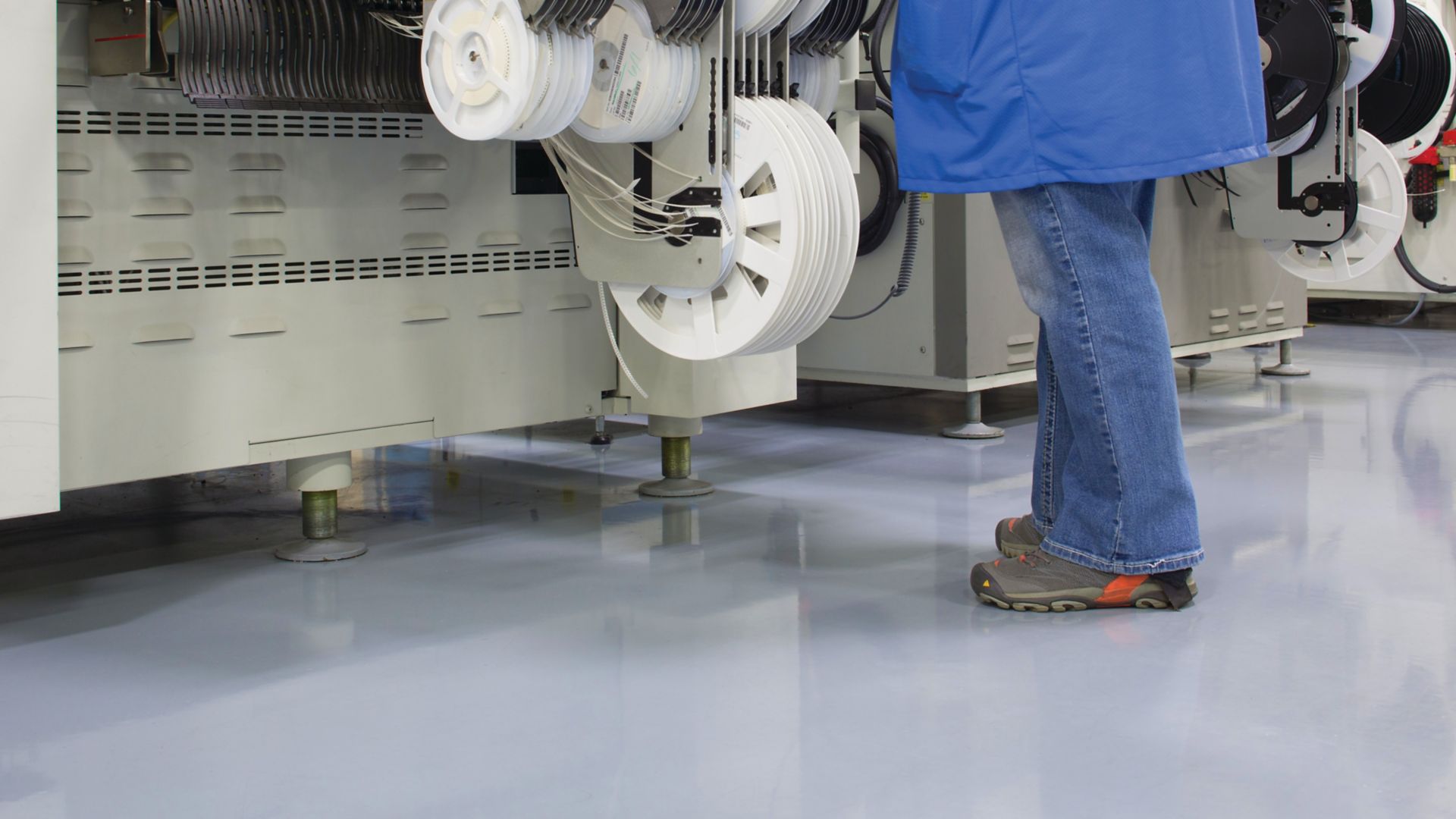Electrostatic discharge (ESD) floors are floors installed with ESD flooring systems to protect electronics from damage caused by static electricity which accumulates from traffic.
What is ESD?
Controlling electrostatic discharge begins with understanding how an electrostatic charge occurs in the first place.
An electrical charging process begins with a charge which is generated by the contact and separation of two surfaces. These surfaces can be in the form of solids, liquids or particles, such as gasses, dust or powder.
What are the Risks?
If ESD protection and control is not taken into consideration:
- Fire and explosions can happen in places where there are explosive atmospheres and substances (gas, vapor, spray, liquids, dust, explosives, fireworks)
- Devices could be damaged or completely destroyed in places where there are electrostatic sensitive devices
It is this potentially unseen, unfelt or unheard ‘micro lightning’ spark that can occur without warning, which must be prevented or controlled.
When it comes to flooring, a person who walks over a normal floor stores a negative charge, which may in turn lead to static electroshock. This spark may damage microelectronic parts or even trigger an explosion.
How Does ESD Flooring Work?
To understand how ESD floors work in reducing the risks mentioned, it helps to understand conductivity and the inherent electrical resistance of materials.
Check out our knowledge article to learn more about the science behind electrostatic discharge and how ESD floors really work to "ground" an electrical charge.
Does My Project Need an ESD Floor?
In principle, ESD floors are needed in places with explosive atmospheres and substances (gas, vapor, spray, liquids, dust, explosives, fireworks).
In industries where electronic components or volatile chemicals are involved, static electricity can result in significant damage, injury and financial loss. All active electronic components and equipment, such as microchips, integrated circuits and machinery, are sensitive to ESD events. Even when areas and people are equipped to handle such static-sensitive devices, inadvertent contact and damage can still occur.
Sikafloor® ESD (Electro Static Discharge) and Sikafloor® ECF (Electrically Conductive Flooring) Systems can safeguard your entire process. These systems can be used to design and produce a floor that is tailor-made to meet your specific needs.
How to Choose an ESD Floor?
Guide to selection of ESD protection for floors
There are many floor covering materials and systems which can provide different degrees of static-dissipative or antistatic (low charge-generating) properties.
The specification of flooring materials should be based on the architectural design, electrical code, standards and regulations for the specific project types and floor types.
Standards To Which You Can Refer
ESD Protection Standards in North America
- UFGS-09 97 23
- NFPA 77
- ASTM F 150
- ANSI/ESD S20.20
ESD Protection Standards in Europe
- DIN VDE 0100-600
- DIN EN IEC 62485-2
- DIN EN 14041
- DIN EN 1081
- IEC 61340-5-1
- ATEX 153 ED 99/92/EC (also known as ATEX 137)
- UK: DSEAR Regulations
- CH: IVSS-Broschure "Gasexplosionen" (No. 2032)
IVSS-Broschure "Staubexplosionen" (No. 2044)
- AT: ExSV 1996
- DE: TRGS 727
ESD Protection Standards in Asia Pacific
- SJ/T 10694-2006
Examples of ESD Flooring Systems
Sikafloor® MultiDur ES-56 ESD
Sikafloor® MultiDur ES-55 ESD
Sikafloor® MultiDur ES-57 ESD
Latest Development - Sikafloor®-2350 ESD as Final Layer
- Low odor during application
- Free of carbon fibers
- Free of ionic/ antistatic agent
- Volume conductivity
- High compressive strength and hardness
- Suitable for permanent water load
- Meets ESD requirements even at low air humidity: BVG < 30 V
- Outstanding appearance, “like a mirror”

